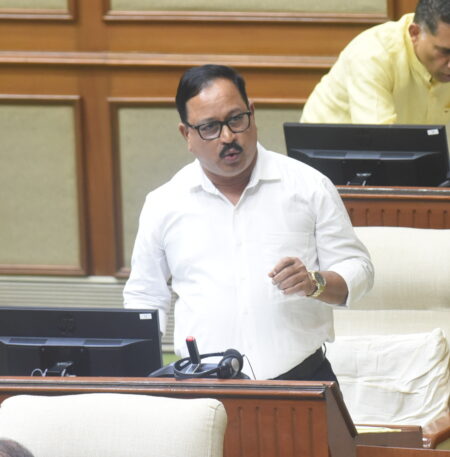NEw Delhi: India’s space capabilities received a major boost with the successful launch of the NASA-ISRO Synthetic Aperture Radar (NISAR) satellite—the most expensive civilian Earth observation satellite ever built, valued at $1.3 billion. The satellite was launched aboard India’s GSLV F-16 rocket from Sriharikota, marking a landmark moment in Indo-US space collaboration.
ISRO Chairman Dr. V. Narayanan described the mission as a “highly satisfying and exciting moment”, reflecting on both the technical achievement and the emotional journey that led to liftoff. “Each launch is important, and since it was a new vehicle configuration for us, I was a little tense. But now I’m relaxed,” he said.
The NISAR satellite boasts cutting-edge technology, including a dual-frequency Synthetic Aperture Radar system—the L-band built by NASA’s Jet Propulsion Laboratory (JPL) and the S-band developed by ISRO. Its 12-meter unfurlable antenna, resembling a giant umbrella, represents a major technological breakthrough.
The launch was also unique in its sun-synchronous polar orbit, a first for the GSLV rocket, which had previously only been used for geosynchronous missions. “This was the 102nd launch from Sriharikota and the 18th using GSLV, but the first into a sun-synchronous orbit,” he noted.
ISRO’s responsibilities extended beyond radar development—it built the entire spacecraft, including the structure, power systems, inertial systems, and propulsion. “ISRO built the satellite. NASA built the radar payload. Our rocket placed it in orbit. That’s what makes this mission truly special,” he added.
The NISAR project represents one of the most significant examples of scientific cooperation between the two countries. “What a proud moment it was when it was announced that the satellite jointly built by India and the US would be launched by an Indian rocket.”
The successful use of India’s indigenously developed cryogenic engine, once denied under international restrictions, is a milestone in itself. “I started this program as a junior engineer. Two decades later, here we are. But this success belongs to thousands—scientists, engineers, industrial partners. It’s a collective achievement.”
The GSLV, once nicknamed ISRO’s “naughty boy” due to early inconsistencies, has matured into a reliable launch vehicle. “It’s like a teenager who has finally learned to behave,” he said with a smile.
The satellite is currently healthy, with solar panels deployed and power systems functioning. The antenna is now being unfurled and payload systems tested. Full operational status is expected in 2.5 to 3 months, after which it will serve for 6 to 7 years, delivering high-precision Earth observation data crucial for climate monitoring, disaster response, agriculture, and environmental management.
“From resource mapping to disaster forecasting, this data will benefit not just India but the entire global community.”
NASA expressed satisfaction with the launch, praising ISRO for accurate orbit injection and flawless mission execution.
Reflecting on India’s journey from satellite dependence to global space leadership, it was noted, “Fifty years ago, we relied on foreign help to build our first satellite. Today, we are placing the world’s most expensive civilian satellite in orbit with our own rocket. Strength respects strength.”
ISRO’s success is credited to its institutional ethos, open work culture, and strong collaboration with academia and industry. “It’s not about individuals. It’s about the team—the 20,000 employees of the Department of Space, our partners, and our nation’s vision.”
The NISAR launch not only marks a technical triumph but also reinforces India’s status as a global space power, built on collaboration, innovation, and resilience. “This is a proud moment for every Indian,” Dr. Narayanan said, “a symbol of how far we’ve come—and how much further we can go.”








